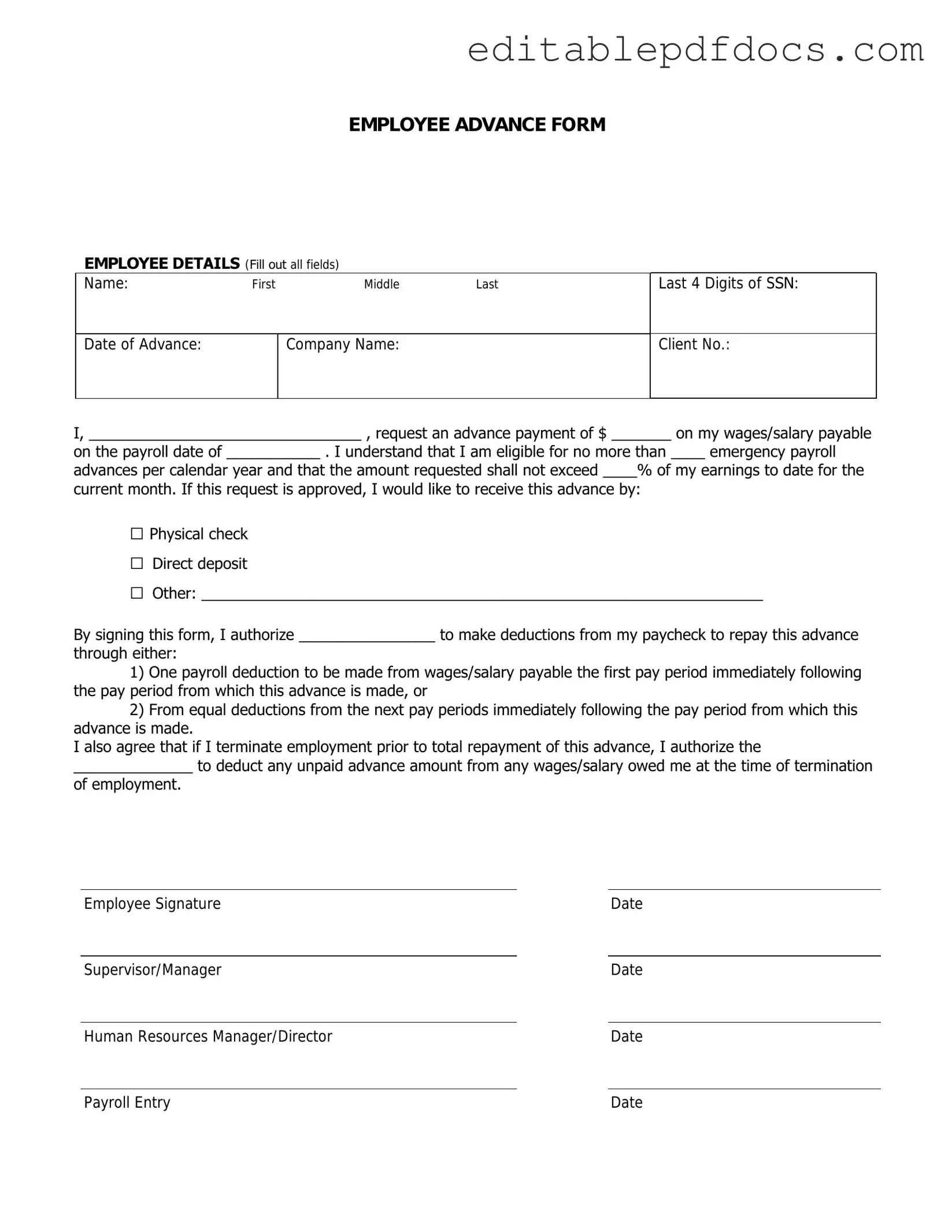Fill a Valid Employee Advance Template
The Employee Advance form is a document that allows employees to request an advance on their salary or wages for various personal or work-related expenses. This form is essential for ensuring that employees can manage their financial needs while maintaining their responsibilities at work. To get started, please fill out the form by clicking the button below.
Open Editor Now
